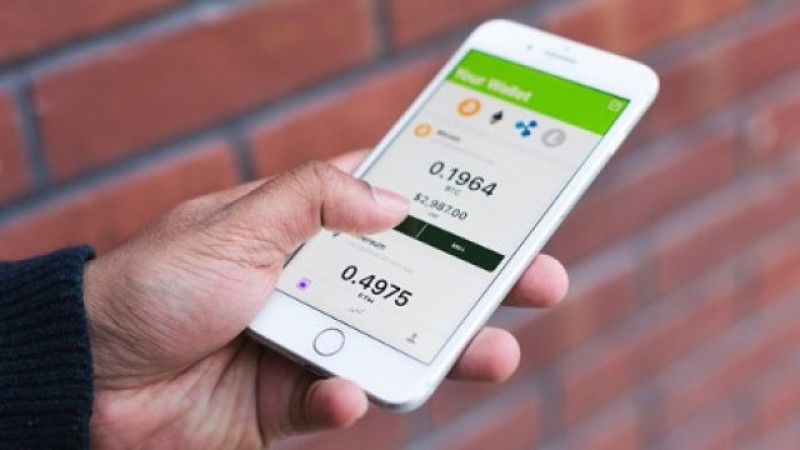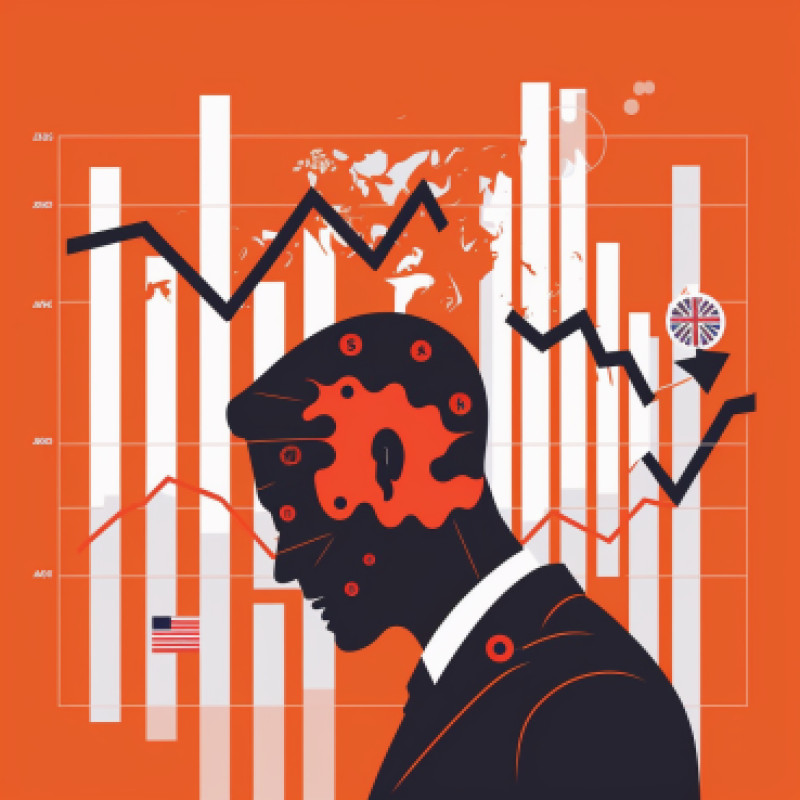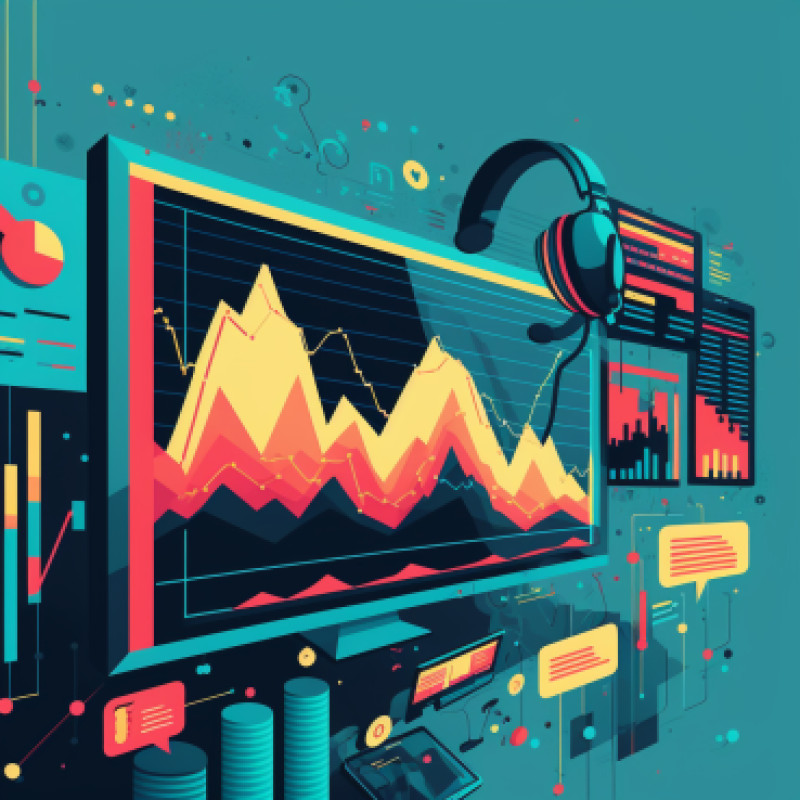
What Is a Forex Signal System?
A Forex signal system is a set of rules or indicators that are used to generate trade signals for buying or selling currencies in the foreign exchange market. These signals can be generated manually by a trader or automatically by a computer program or trading algorithm.
A Forex signal system typically includes the following components:
Indicators: Technical indicators, such as moving averages, relative strength index (RSI), and stochastics, are used to analyze price and volume data and generate trade signals.
Trading rules: These rules specify the conditions under which a trade signal is generated and the actions to be taken, such as entering or exiting a trade.
Risk management: This component of the system helps traders to manage their risk by setting stop-loss and take-profit levels, and determining the appropriate position size.
Execution: Once a trade signal is generated, the system should include a mechanism for executing the trade, such as a trading platform or a broker.

Forex signal systems can be based on different types of analysis, including technical analysis, fundamental analysis, or a combination of both. Some signal systems are also based on automated trading strategies, such as algorithmic trading or high-frequency trading.
Forex signal systems can be useful for traders who want to make informed decisions about when to buy or sell currencies, but they should be used in conjunction with other forms of analysis and risk management strategies.
Understanding Forex Signal Systems
Forex signal systems are tools used by traders to help identify profitable trades in the foreign exchange market. These signals can be generated manually by a trader or automatically by a computer program or trading algorithm.
Forex signal systems typically include several components, such as technical indicators, trading rules, risk management strategies, and execution mechanisms. Technical indicators, such as moving averages and relative strength index (RSI), are used to analyze price and volume data and generate trade signals. Trading rules specify the conditions under which a trade signal is generated and the actions to be taken, such as entering or exiting a trade. Risk management helps traders to manage their risk by setting stop-loss and take-profit levels and determining the appropriate position size. Execution mechanisms, such as trading platforms or brokers, are used to execute trades once a signal is generated.
Forex signal systems can be based on different types of analysis, including technical analysis, fundamental analysis, or a combination of both. Some signal systems are also based on automated trading strategies, such as algorithmic trading or high-frequency trading.
How to Use Forex Signal Systems
Forex signal systems can be used in a variety of ways, depending on the trader's goals and preferences. Here are a few examples of how traders can use Forex signal systems:
As a standalone strategy: Some traders may use Forex signal systems as their primary trading strategy. They will rely on the signals generated by the system to make all of their trading decisions.
As a confirmation tool: Other traders may use Forex signal systems as a confirmation tool for their own analysis. They may use the signals generated by the system to confirm their own trades or as an additional form of analysis.
As a filter: Some traders may use Forex signal systems to filter out trades that are not likely to be profitable. For example, a trader may use a signal system to identify trades that are in line with the current trend, but only execute trades that meet certain risk management criteria.
As a learning tool: Some traders may use Forex signal systems as a learning tool to improve their own trading skills. They may use the signals generated by the system to understand how the system works and to learn how to identify similar patterns in the market.

What is a Trade Signal?
A trade signal is a signal or indication that suggests it may be a good time to buy or sell a particular security. Trade signals can be based on a variety of technical or fundamental factors, such as price movements, trading volume, or economic indicators. They can be generated by using technical analysis or fundamental analysis.
How a Trade Signal Works
A trade signal works by providing traders with an indication of when it may be a good time to buy or sell a particular security. The signal is generated by using technical analysis, fundamental analysis, or a combination of both, to identify patterns or indicators that suggest a change in the price of a security.
Once a trade signal is generated, traders can use it to make more informed decisions about when to enter or exit a trade. For example, if a trade signal indicates that a stock is likely to increase in price, a trader may choose to buy shares of that stock. If a trade signal indicates that a stock is likely to decrease in price, a trader may choose to sell shares of that stock or to short the stock.
Trade signals can be generated manually by a trader, or they can be generated automatically by a computer program or trading algorithm. Some traders may also subscribe to a service that provides trade signals. These services can be offered by independent providers or by brokerage firms.
It's important to note that trade signals are not a guarantee of success and they should not be the sole basis for making trading decisions. Traders should use trade signals in conjunction with other forms of analysis, such as risk management and position sizing. They should also consider their own risk tolerance and investment goals when using trade signals.
How Traders Analyze Trade Signals
Traders can use a variety of methods to analyze trade signals, including technical analysis and fundamental analysis. Technical analysis involves studying charts and historical price data to identify patterns and make predictions about future price movements. Fundamental analysis looks at a company's financial health and industry trends to determine the value of its stock.

Uses of Trade Signals
Trade signals can be used by traders to help them make more informed decisions about when to buy, sell, or hold a particular security. They can be used on their own or as part of a larger trading strategy. Additionally, traders can subscribe to a service that provides signals. These services can be offered by independent providers or by brokerage firms.
Example of a Trade Signal
An example of a trade signal is a stock breaking through its 50-day moving average. This could be a signal to buy the stock, as it indicates that the stock's price has been trending upward and may continue to do so. Of course, it is important to note that no signal is 100% accurate and past performance is not necessarily indicative of future results. Therefore, traders should always use trade signals in conjunction with their own research and analysis.
Creating a Trade Signal
Creating a trade signal can involve identifying various technical patterns, indicators, and factors that suggest it may be a good time to buy or sell a particular security. Some examples of these include:
Technical patterns: Technical patterns, such as head and shoulders or double bottoms, can be used to identify potential trade signals. These patterns form on a stock's price chart and may indicate a potential change in the stock's trend.
Moving average cross: A moving average cross occurs when a short-term moving average crosses above or below a long-term moving average. This can indicate a change in trend and potentially be used as a trade signal.
Volume surge: A significant increase in trading volume can be an indication of increased interest in a stock and potentially be used as a trade signal.
Interest rates: Changes in interest rates can affect the overall market and individual stocks. A rise in interest rates can lead to a decrease in stock prices, while a decrease in interest rates can lead to an increase in stock prices. This can be used as a trade signal.
Volatility: A sudden increase in volatility can indicate increased uncertainty in the market and potentially be used as a trade signal.
Cycles: Seasonal or cyclical patterns can also be used to identify trade signals. For example, if a stock tends to perform well during a certain period of the year, a trader may use that information to inform their trading decisions.
Sentiment extremes: When a stock or the market as a whole experiences extreme bullish or bearish sentiment, it can be a sign that a change in trend is imminent and can be used as a trade signal.
Valuation: Valuation metrics such as P/E ratio or price-to-book ratio can be used to identify stocks that are under or overvalued, which can be used as a trade signal to buy or sell the security.

It's important to remember that creating a trade signal is not a one-time process, it requires a continuous monitoring of the market and the security in question. Traders should also be aware that no signal is 100% accurate and past performance is not necessarily indicative of future results. Therefore, it's essential to test the signal before using it and to use it in conjunction with other forms of analysis and risk management strategies.
Trading Signals WhatsApp: A Convenient Way to Stay Ahead of the Market
The world of trading can be a fast-paced and competitive one, with new information and opportunities emerging every day. To stay ahead of the market, many traders rely on trading signals to provide them with valuable insights and predictions about potential trades. One way to receive these signals is through WhatsApp, a popular messaging app that allows traders to receive updates and alerts directly on their smartphones.
What are Trading Signals WhatsApp?
Trading signals WhatsApp are alerts and updates that are sent to traders via the WhatsApp messaging app. These signals can include information about potential trades, market trends, and other important market data. Many trading signal providers offer a subscription service that allows traders to receive regular updates and alerts via WhatsApp, providing them with a convenient way to stay informed and make informed trading decisions.
Why Use Trading Signals WhatsApp?
The convenience of receiving trading signals via WhatsApp is one of the main reasons why many traders choose to use this service. With WhatsApp, traders can receive alerts and updates in real-time, without the need to constantly check their computers or other devices. This can help traders to quickly and easily identify potential trades and stay ahead of the market. Additionally, WhatsApp is a widely used app, making it easy for traders to stay in touch with their signal provider.
How to Find Quality Trading Signals WhatsApp
When looking for trading signals WhatsApp, it's important to find a reliable and reputable provider. One way to do this is to research providers online and read reviews and testimonials from other traders. Additionally, look for providers that offer a trial period or a money-back guarantee, so you can test the quality of the signals before committing to a subscription.
Gold Trading Signals
For traders looking to trade Gold, it's important to find trading signals specifically related to gold. Some providers offer gold trading signals as part of their service, providing traders with insight into the gold market and potential trades. By subscribing to Gold trading signals WhatsApp, traders can stay informed about the latest trends and movements in the gold market, helping them to make more informed trading decisions.
Conclusion
Trading signals WhatsApp can be a valuable tool for traders looking to stay informed and make informed trading decisions. By subscribing to a reliable trading signals WhatsApp service, traders can receive alerts and updates in real-time, making it easy to stay ahead of the market and identify potential trades. Additionally, gold trading signals WhatsApp are a great way for traders to stay informed about the gold market trends and movements. As always, it's important to do your research and find a reputable provider before subscribing to any trading signals service.
Free and Paid Trading Signals
Trading signals can be obtained through various sources, including free and paid options.
Free Trading Signals:
Free trading signals can be obtained through various means, such as social media, forums, and websites. These signals are typically generated by individual traders or amateur traders who may not have a proven track record of success. It is important to note that free signals may not be as reliable or accurate as paid signals and may not include detailed explanations or analysis.
Paid Trading Signals:
Paid trading signals are typically generated by professional traders or trading firms with a proven track record of success. These signals may be more reliable and accurate than free signals and may include detailed explanations and analysis. Paid signals may be offered on a subscription basis or through a one-time purchase.
It is important for traders to evaluate the credibility and track record of the signal providers before using their signals, whether it is a paid or free signal. Traders should also use signals in conjunction with their own analysis and risk management strategies.

Is there a difference between expensive and free signals?
The main difference between expensive and free signals is the level of reliability and accuracy. Expensive signals are typically generated by professional traders or trading firms with a proven track record of success and may include detailed explanations and analysis. Free signals, on the other hand, may be less reliable and accurate and may not include detailed explanations or analysis.
Should we trust free signals?
While free signals can be a valuable resource for traders, it's important to remember that no trading signal is 100% accurate and past performance is not necessarily indicative of future results. Additionally, the market is highly volatile and can be affected by a wide range of economic, political, and other factors. Therefore, traders should use free signals with caution and in conjunction with other forms of analysis and risk management strategies. It's important for traders to evaluate the credibility and track record of the signal providers before using their signals.
Which Signal is Best for Traiding?
It is difficult to say which signal is best for trading as it depends on the individual trader's preferences, risk tolerance, and trading strategy. Some traders may prefer to use technical analysis methods to generate signals, while others may prefer to use fundamental analysis methods. Additionally, some traders may prefer to use automated trading systems, while others may prefer to rely on the expertise of professional traders.
It is recommended that traders evaluate multiple signal sources and test them on a demo account before committing to a particular signal. Traders should also use signals in conjunction with their own analysis and risk management strategies.
Ultimately, the best signal is the one that aligns with the trader's individual preferences, risk tolerance and trading strategy. It is also important that the signal is reliable and trustworthy, and it is recommended that traders do their due diligence in researching signal providers before using their signals.

Are Trading Signals Worth It?
Trading signals can be a valuable resource for traders, but they are not a guarantee of success. Signals can provide traders with potential trade ideas and can help to identify entry and exit points for trades. However, it's important to remember that no trading signal is 100% accurate and past performance is not necessarily indicative of future results. Additionally, the market is highly volatile and can be affected by a wide range of economic, political, and other factors. Therefore, traders should use signals in conjunction with other forms of analysis and risk management strategies.
It is also important for traders to evaluate the credibility and track record of the signal providers before using their signals, whether it is a paid or free signal. It's also necessary to test the signals on a demo account before committing to a particular signal.
In summary, trading signals can be a valuable tool for traders, but they should not be relied upon exclusively. Traders should use signals in conjunction with other forms of analysis and risk management strategies, and should evaluate the credibility of the signal provider before using their signals.





